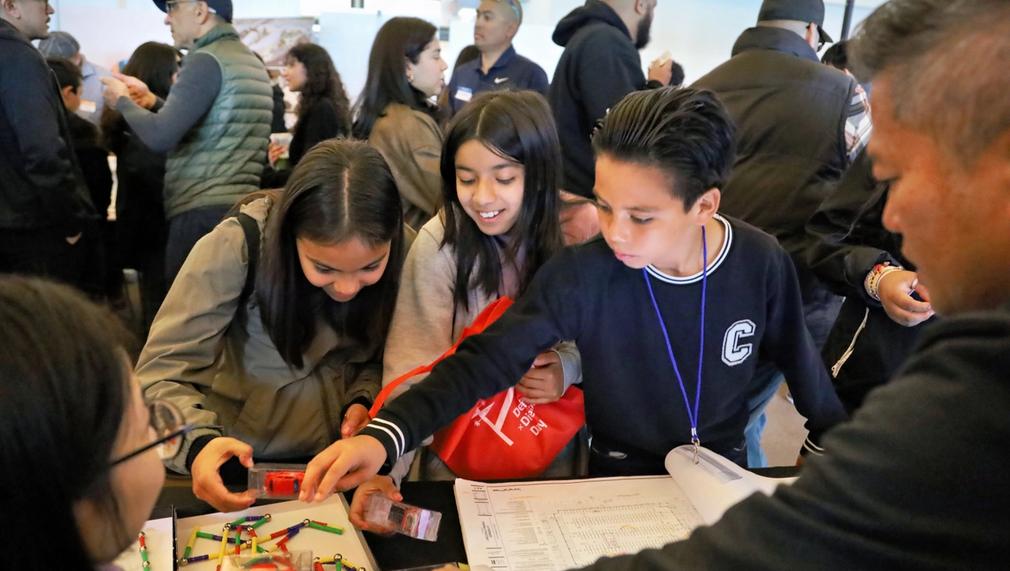Build a Green LA
The Build a Green LA program will engage with 6-12 grade students on sustainability and environmental justice, highlighting architects' roles in addressing climate change. Through annual charrettes, students will learn how architecture shapes the built environment and receive education about climate change. The program aligns with ACLA's goal to increase awareness of the built environment's impact on the planet and the power of sustainable design to create a better Los Angeles.

What is the primary issue area that your application will impact?
K-12 STEAM education
In what stage of innovation is this project, program, or initiative?
Pilot or new project, program, or initiative (testing or implementing a new idea)
What is your understanding of the issue that you are seeking to address?
ACLA aims to spread awareness of the built environment's environmental impact, including carbon emissions, energy consumption, and resource depletion. By educating students on sustainable design and construction practices, we aim to instill an early understanding of environmental stewardship. This initiative empowers students to take conscious actions that reduce carbon footprints, lower life cycle costs, and improve public health. It hopes to foster a community that values green building practices and everyday habits contributing to a more sustainable and resilient future. The program ensures students receive accurate and comprehensive climate change education. Engaging students in the program hopes to inspire the next generation of leaders, architects, and innovators dedicated to advancing environmental stewardship and sustainable development.
Describe the project, program, or initiative this grant will support to address the issue.
ACLA's ambitious project is designed to introduce 30-40 students in grades 6-12 to topics of sustainable design through a “hands on” intensive design process. Build a Green LA will consist of a full-day convening/workshop focused on education about sustainable design principles and demonstrating the architects' role in shaping the built environment and advancing sustainability. Students will identify and propose solutions to sustainability issues facing the Los Angeles region (e.g., water retention and flood prevention in heavy rains; solar capacity; adaptation to rising temperatures; and reducing carbon footprint). Following an all-ages assembly, during which the design problem will be introduced, groups of 6-8 students will work through their solution through Air, Fire, Water, and Earth stations to explore with subject matter experts the various sustainability topics and develop their concepts. The charrette will be held in a workshop environment and will include lunch and snack breaks. Toward the end of the day, students will present their proposals, followed by discussion, prizes and a Q&A on how one becomes a designer, engineer, or architect. Participation will be voluntary. There will be no criteria for selection (on the part of ACLA) other than a desire to be included. Each step of the process, from age-appropriate content selection to prompts and hand-out materials at the end of the day, will be recorded so they may be refined and/or replicated.
Describe how Los Angeles County will be different if your work is successful.
Educating students about sustainable practices fosters a community-wide understanding of environmental issues, leading to more eco-conscious behaviors and decisions. If our work is successful, we will have inspired students in Los Angeles to know more about sustainability and the role that architecture, engineering, and design have in addressing and responding to climate change. These students will become leaders, architects, and innovators dedicated to advancing environmental stewardship and sustainable development. These students will become advocates for and designers of sustainable buildings and environments that have improved air quality, natural lighting, and non-toxic materials, which can enhance the overall health and well-being of community members. Sustainable developments will also help address social inequalities by ensuring all community members have access to safe, healthy, and affordable living environments creating a better and more resilient Los Angeles.
What evidence do you have that this project, program, or initiative is or will be successful, and how will you define and measure success?
This project is in the planning stage. Success will be defined both operationally and whether the project succeeded in engaging students, demystifying the process of how their built environment came to be and showing them that they can do the work of designing buildings and cities. To determine students’ engagement, we will survey both teachers and students at the conclusion of the program (likely using a Likert scale format with space for written replies). Challenges and lessons learned will be recorded and taken into consideration for future iterations of the project. Post-event, the board and Build a Green LA subcommittee will meet for postmortem analysis, notes from which will be shared with sponsors, supporters, and partners.
Approximately how many people will be impacted by this project, program, or initiative?
Direct Impact: 80.0
Indirect Impact: 120.0